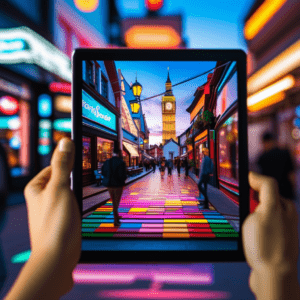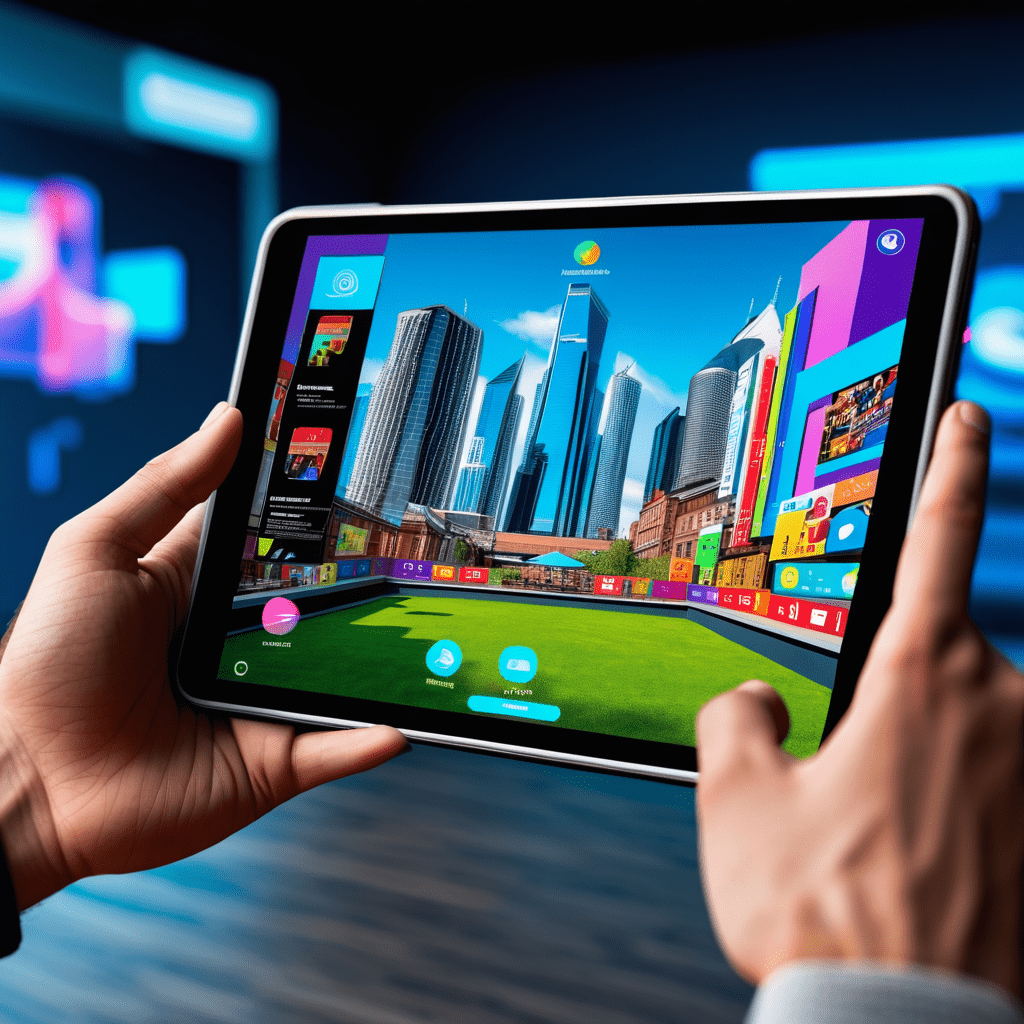The Rise of Augmented Reality: A Journey from Concept to Cutting-Edge Technology
Introduction
Augmented Reality (AR) has become a buzzword in recent years, captivating both tech enthusiasts and businesses alike. This revolutionary technology has transformed the way we interact with the world around us, blurring the line between the physical and digital realms. But when exactly was augmented reality invented? Let’s dive into the fascinating history of AR and explore its evolution over the years.

The Birth of Augmented Reality
The concept of augmented reality can be traced back to the 1960s when computer scientist Ivan Sutherland introduced the idea of a head-mounted display that could overlay computer-generated graphics onto the real world. This groundbreaking concept laid the foundation for what would eventually become augmented reality.
However, it wasn’t until the 1990s that AR started to gain traction. In 1992, Tom Caudell, a researcher at Boeing, coined the term ‘augmented reality’ to describe a digital display system that assisted aircraft assembly workers by overlaying virtual wireframe models onto physical objects.
Early development of AR
In the years following Sutherland’s invention, there was continued research and development of AR technology. However, it wasn’t until the early 2000s that AR technology started to become more practical and affordable.
One of the key breakthroughs in AR development came in 2001, when Louis Rosenberg developed the Virtual Fixtures system. Virtual Fixtures was a desktop-based AR system that allowed users to interact with virtual objects in a real-world environment.
Another key breakthrough came in 2009, when the Google Glass AR headset was first announced. Google Glass was a wearable AR headset that allowed users to view information and interact with applications without having to use their hands.
Advancements and Innovations
Throughout the 2000s, augmented reality continued to evolve with the advent of new technologies and the growing capabilities of smartphones. In 2008, the release of the iPhone 3GS marked a significant milestone for AR, as it was the first smartphone to include a built-in compass and GPS, enabling developers to create location-based AR experiences.
One of the most notable AR applications in the early 2010s was the popular mobile game Pokémon Go, which took the world by storm in 2016. The game allowed players to capture virtual Pokémon creatures in real-world locations using their smartphones, showcasing the immense potential of augmented reality in the gaming industry.
Fast forward to 2019, and we saw the release of the highly anticipated Microsoft HoloLens 2, a mixed reality headset that blends augmented reality with virtual reality. This cutting-edge device offers users an immersive AR experience, allowing them to interact with holograms in their physical environment.
Applications of AR
AR technology is being used in a variety of industries and applications, including:
- Gaming: AR is being used to create new and immersive gaming experiences. For example, the popular mobile game Pokémon GO uses AR to allow players to catch Pokémon in the real world.
- Education: AR is being used to create more engaging and interactive educational experiences. For example, AR can be used to bring historical events to life or to teach students about complex scientific concepts.
- Healthcare: AR is being used to improve healthcare delivery and patient outcomes. For example, AR can be used to help surgeons visualize patients’ anatomy during surgery or to help patients with rehabilitation exercises.
- Manufacturing: AR is being used to improve manufacturing processes and productivity. For example, AR can be used to provide workers with real-time instructions on how to assemble products or to help them inspect products for defects.
Current and Future Applications
Today, augmented reality has expanded beyond gaming and entertainment, finding applications in various industries. In the retail sector, AR is being used to enhance the shopping experience by allowing customers to virtually try on clothes or visualize furniture in their homes before making a purchase.
AR is also making waves in the healthcare industry, where it is being used for surgical planning, medical training, and patient education. By overlaying virtual images onto the patient’s body, doctors can gain valuable insights and improve the accuracy of complex procedures.
Looking ahead, the future of augmented reality holds even greater promise. With advancements in wearable technology, such as smart glasses and contact lenses, AR could become seamlessly integrated into our everyday lives. Imagine walking down the street and instantly accessing information about the buildings around you or receiving real-time translations in foreign countries.
Summary
Augmented reality has come a long way since its inception in the 1960s. From its humble beginnings as a concept to its widespread adoption in various industries, AR has revolutionized the way we perceive and interact with the world. As technology continues to advance, we can expect even more exciting innovations and applications for augmented reality in the future.
If you enjoyed this read, please surf our Augmented Reality category, and you might find this article interesting: Affordable Augmented Reality Devices: A Buyer’s Guide for 2023







